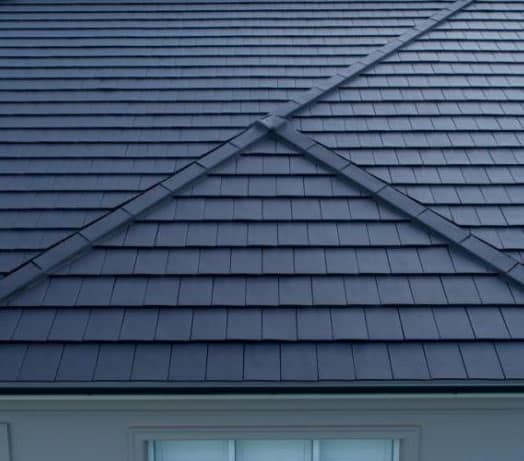Roof vents are an important part of any structure, as they allow air to circulate throughout the attic. In Arizona, where temperatures can reach extreme highs during summer months, proper ventilation is essential for keeping a home cool. While roof vents may be necessary, homeowners may not want them detracting from their home’s aesthetic appeal. This article will discuss ways in which roof vents can be hidden in order to maintain the style of the building while ensuring adequate airflow.
Ventilation systems should be designed with both functionality and appearance in mind, so that the structural integrity of a building remains intact even if it presents an attractive façade. There are several options available for concealing roof vents that range from simple solutions such as using boxes or covers to more complex strategies like installing various types of roofs over existing structures. Regardless of the chosen method, careful consideration must be taken into account when hiding roof vents to ensure that there is enough space between components and no interference with other parts of the home’s architecture.
Definition Of Roof Vents
Roof vents are an important component of a building’s ventilation system. They promote air circulation, help to regulate the temperature in the attic space and can also be used as an outlet for exhaust fumes from certain appliances such as gas-fired water heaters or stoves. Roof vents come in different shapes, sizes and materials, depending on the type of roof and its particular requirements. Generally speaking, they consist of a metal or plastic dome-shaped cap that fits over either an intake or exhaust duct connected to the house’s mechanical systems. The vent is usually placed at the highest point of the roof where it can draw out warm air without obstructing airflow. Furthermore, some roof vents may feature insect screens which prevent insects entering into the home via these openings.
Types Of Roof Vents
The types of roof vents used in Arizona vary based on the climate and environment. Generally, there are two main categories: attic ventilation systems and exterior wall-mounted vents. Attic ventilations systems consist of turbine or power exhaust fans, gable end or soffit vents, ridge vents, and static vents. Exterior wall mounted vents include louvers, mushroom caps, and box hoods.
Each type of vent has its benefits depending on the structure’s needs. For example, a turbine or power exhaust fan is effective at removing moisture from attics while still being relatively quiet compared to other options. Ridge vents provide an efficient way to remove air since they span along the entire length of the roofline. Louvers also allow for adequate airflow but offer more security against animals entering the home than some other models as they can be equipped with screens to keep pests out. Finally, mushroom caps have been proven to effectively reduce noise levels when installed correctly due to their design that disperses pressure waves outwardly instead of up towards the vent opening.
Reasons To Hide Roof Vents In Arizona
Hiding roof vents in Arizona can provide many benefits to building owners and residents. Hiding the rooftop air distribution unit from view is aesthetically pleasing, improving curb appeal by providing a clean, unified look for the home or business. Additionally, hiding these vents keeps them out of sight from potential thieves and vandals who may target visible mechanical components.
In addition to security concerns, hiding roof vents also helps protect their longevity as they are less exposed to environmental elements such as extreme temperatures, hail storms and other weather-related damages. Concealing rooftop units also prevents debris accumulation which could cause blockages that disrupt airflow or interfere with the proper functioning of air ducts. Finally, keeping roof vents hidden ensures that stray animals cannot access them and set up nests inside the system.
Roof Vent Covers Available In Arizona
In Arizona, homeowners have a variety of options for covering their roof vent. Metal covers are one option that is available and can be custom made to fit the specific size of any vent. These metal covers come in different colors and styles, allowing homeowners to choose an option that fits the aesthetic of their home. One advantage of metal covers is that they provide excellent protection against inclement weather due to the strength of the material.
Wooden covers offer a more natural look compared to metal and may match better with certain types of homes or landscapes. They also tend to be slightly cheaper than metal but require regular maintenance as wood can deteriorate over time if not treated properly. Lastly, plastic roof vent covers are lightweight and easy to install; however, they may not last as long as other cover materials depending on exposure to extreme temperatures or weather conditions. No matter which type of cover is chosen, it is important for homeowners in Arizona to consider all factors before selecting a product in order to ensure optimal protection from outside elements.
DIY Hiding Solutions
DIY hiding solutions are an ideal way to conceal roof vents in Arizona. Several options are available, such as using a trellis or other latticework attached to the house wall and extending over the vent. This allows for natural ventilation while still obscuring the view of the vent from casual observation. Another option is to build a wooden box-like structure around the area of the vent that can be painted to blend into its surroundings. Shutters with louvers may also be used, although this approach requires more maintenance than others due to their need for regular repainting. Finally, various types of artificial foliage and greenery can be used to camouflage the vent area without blocking airflow.

Professional Installation Advice
When attempting to hide roof vents in Arizona, there are a few options that require professional installation. One of the most popular is installing a false vent or artificial rock covering over an existing vent. This option is relatively easy and should not take more than a day to install. The false vent will be designed to fit securely on top of the original one so that it looks like part of the home’s design while still allowing air flow through the actual vent underneath.
Another solution for hiding roof vents in Arizona is to add architectural elements such as dormers, gables or eyebrow arches around them. These decorative accents can draw attention away from an unsightly roof vent and give the roofline more character. Professional contractors can also recommend other ways to conceal roof vents with shingles or tiles, depending on the type of material used for the roof itself. With experienced help, these solutions can provide lasting protection and aesthetic appeal for any home.
Advantages Of Hiding Roof Vents
Hiding roof vents in Arizona can offer several advantages. Firstly, it can provide an aesthetically pleasing appearance to the exterior of a building or home. By hiding the vents from view, a more uniform and attractive look is created. Secondly, hiding the vents can reduce noise pollution as they are tucked away out of sight. This means that any sound generated by the vent fan will be muffled and not heard outside of the house or building. Additionally, hidden vents may help improve energy efficiency since air circulation around them is reduced when compared to exposed ones.
Furthermore, such vents also act as an extra layer of protection against wind-driven rain or snow entering into the attic space as well as protecting birds or animals from nesting inside them. Finally, this type of ventilation helps prevent hot spots on roofs caused by too much heat being trapped under shingles due to inadequate airflow through traditional open soffit systems. In summary, there are many benefits associated with concealing roof vents in Arizona which include improved aesthetics, better noise reduction and enhanced energy efficiency amongst others.



